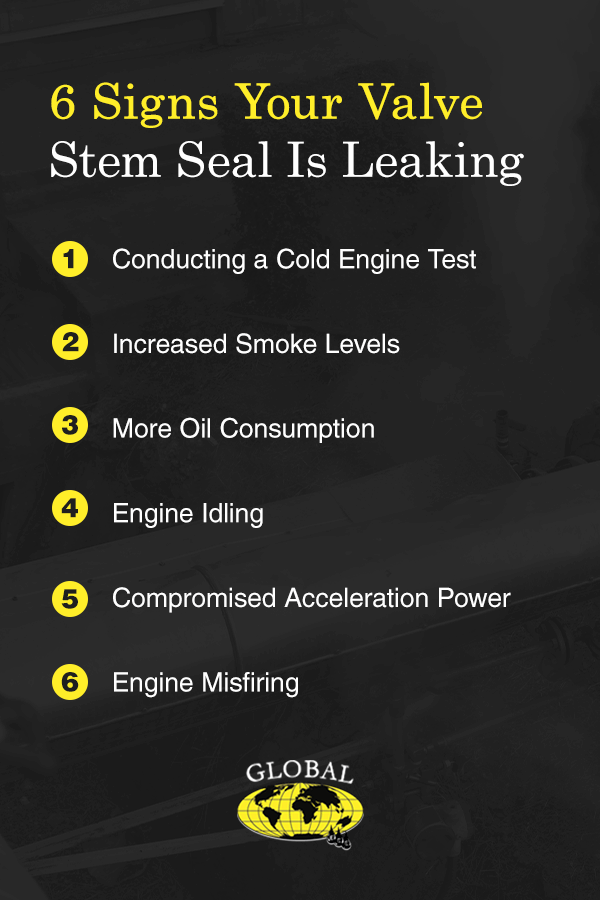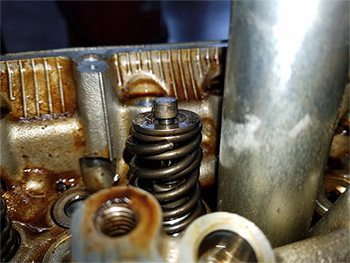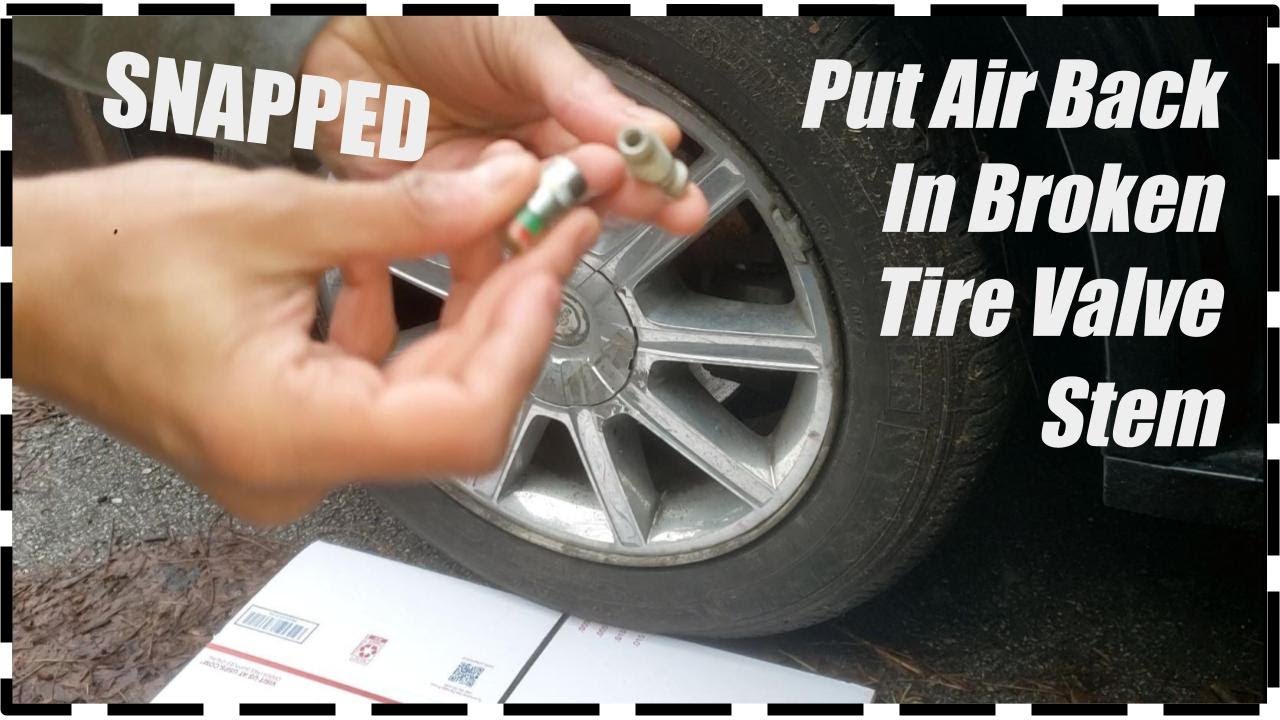Can You Drive With a Broken Valve Stem?
Driving with a broken valve stem is not recommended as it can lead to a flat tire and loss of vehicle control. Immediate repair is necessary for safe driving conditions.
A valve stem is a small but crucial component of a tire. It’s the tiny protrusion that you unscrew when you need to inflate your tires. While it might seem insignificant compared to other car parts, the integrity of the valve stem is essential for maintaining the proper tire pressure, which in turn affects the vehicle’s handling, fuel efficiency, and tire longevity.
When a valve stem is damaged or broken, it can rapidly deflate the tire, posing a risk not only to the driver but also to others on the road. For this reason, addressing this issue promptly is critical for anyone looking to ensure their vehicle remains safe and roadworthy.

Credit: www.globaleee.com
Risks Of Driving With A Broken Valve Stem
The valve stem is a small but mighty part of your vehicle. It keeps the air in and the flat tires at bay. Driving with a broken valve stem, though, is a risky move. Let’s explore why.
Quick Loss Of Tire Pressure
A broken valve stem leads to rapid air escape. This could mean going from full to flat in no time. Imagine driving and suddenly, your tire gives up. Scary, right?
- Increased puncture risk: Less air means more tire stress.
- Blowouts happen: They’re dangerous and can cause accidents.
Impaired Vehicle Handling
Handling gets hard with a deflated tire. Steering feels off. Braking distances grow. Accident chances go up. Not something to ignore!
| Issue | Consequence |
|---|---|
| Unpredictable steering | Makes turns riskier |
| Longer braking time | Could lead to collisions |
| Poor traction | Less grip on roads |
Driving with a damaged valve stem puts everyone in danger. It’s best to fix it right away. Keeping roads safe is a task for all!
Identifying A Broken Valve Stem
Understanding when your car’s valve stem is broken is crucial. It’s the tiny protrusion where air goes in and out of your tire. If it breaks, you’re in for some trouble. Learning to spot the signs can save you from a potential roadside hassle or even a dangerous blowout. Let’s look at the visual signs and driving symptoms that hint at a busted valve stem.
Visual Signs
Inspecting your car’s wheels is the first step. Look for these clear signs:
- Bent or damaged stem: If it looks crooked or crushed, it’s a bad sign.
- Missing valve cap: It’s a small but vital part that protects the stem.
- Air leakage: Listen for hissing or see if bubbles form with soapy water.
- Physical wear: Cracks or splits in the stem mean it’s time for a fix.
Symptoms While Driving
Next, focus on how your car feels on the road:
| Symptom | What It Means |
|---|---|
| Wobbly Steering: | A shaky wheel could mean air is escaping. |
| Sudden Pulling: | If your car veers off, the tire pressure might be uneven. |
| Flat Tire Warning: | Your dashboard light may alert you to low tire pressure. |
A vigilant driver is often the first to spot these signs. Reacting promptly can prevent a minor issue from becoming a major. If you notice any of these visual cues or driving symptoms, have your car checked immediately. Remember, safety comes first!
Immediate Steps To Take
Encountering a broken valve stem on your vehicle is an unexpected twist that demands quick action. Let’s dive into the immediate steps you should take to ensure your safety and your vehicle’s integrity.
Pull Over Safely
Find a stable spot to steer your car off the road. Flip on your hazard lights to alert others. Your primary goal is staying safe while you deal with the broken valve stem.
Assess The Damage
Once secure, examine the valve stem. Check if air is escaping rapidly. Determine if the stem is the sole issue.
- Look for visible damage on the valve stem.
- Listen for the sound of hissing air to detect a leak.
- Feel around the stem for any air movement.
Temporary Fixes
If the tire isn’t flat, a quick fix might buy you time to seek professional help.
| Temporary Solution | Action |
|---|---|
| Valve Cap | Screw on tightly to slow down air loss. |
| Plug Kit | Use a plug kit designed for valve stems if available. |
| Air Compressor | Reinflate the tire to buy some time. |
Remember, these are short-term solutions. Visit a mechanic soon.

Credit: www.wilhelmautomotive.com
Long-term Solutions
Experiencing a broken valve stem can be a real headache on the road. Yet, it’s not just about a quick fix. Long-term solutions ensure safety and prevent future issues. We’ll dive into options that offer a professional fix, promising peace of mind with durable results.
Professional Repair Options
When faced with a broken valve stem, professional help is a wise choice. Mechanics have the right tools and expertise. They can quickly assess and repair any damage. They also test the tire’s integrity to ensure your drive remains safe.
- Inspection of the entire wheel component.
- Pressure tests for leak detection.
- Quality replacement parts are guaranteed.
Valve Stem Replacement
Choosing to replace a faulty valve stem is the best long-term solution. It avoids quick fixes that don’t last long. Specialized tools remove the old stem safely. A brand-new valve stem restores the seal and maintains tire pressure.
| Step | Action | Benefit |
|---|---|---|
| 1 | Remove the damaged valve stem | Prevents further tire damage |
| 2 | Install a new valve stem | Ensures a proper seal |
| 3 | Test for leaks | Maintains optimal tire pressure |
After the replacement, tire balancing is a must. It helps in keeping the drive smooth. Regular check-ups prevent future valve stem failures. Remember, safety comes first, and a reliable car means a worry-free journey.
Preventive Measures
Taking preventive measures to maintain a healthy car is key. It helps avoid the dangers of driving with a broken valve stem. Let’s explore how to prevent this issue.
Regular Maintenance Checks
A car in top shape keeps you safe on the road. Regular maintenance checks are crucial. They ensure every part, including valve stems, works correcty. Follow these steps:
- Inspect your tires monthly. Look for wear and tear.
- Check the tire pressure. Use a reliable gauge.
- Look at the valve stems. Make sure they are secure and undamaged.
Visits to a professional can catch issues early. This means catching a weak valve stem before it fails.
Protective Accessories
Shield your tire valve stems from harm. Protective accessories are available. They guard against bad weather, dirt, and small impacts.
- Valve caps: Put them on. They keep dust and moisture out.
- Stem covers: Consider them. They provide extra protection.
Selecting quality accessories can extend the life of your valve stems. This means a safer, smoother ride.

Credit: m.youtube.com
Understanding The Consequences
Imagine hearing a hiss from your tire. You find a broken valve stem. What next? Understanding the risks is crucial before hitting the road again. Safety and vehicle maintenance stand at stake.
Potential For Accidents
A broken valve stem disrupts tire pressure balance. Tires are key for stable vehicle handling. Driving with an impaired valve stem increases risk of tire failure. This can lead to loss of vehicle control. High-speed incidents could be severe or even fatal.
Impact On Tire Lifespan
Consistent tire pressure keeps tires healthy. A faulty valve stem allows vital air to escape. A deflated tire wears unevenly. Unchecked, this causes premature wear. Proper maintenance extends tire life and performance. Keeping valve stems in check is a small but critical task.
Frequently Asked Questions For Can You Drive With A Broken Valve Stem?
What Is A Valve Stem In A Tire?
A valve stem is a small tube protruding from a tire. It lets you inflate or deflate the tire. It contains a valve to keep air sealed inside.
Can Driving With A Broken Valve Stem Be Dangerous?
Yes, driving with a broken valve stem is dangerous. It can cause a rapid air leak. This may lead to a flat tire or a blowout while driving.
How To Identify A Broken Valve Stem?
Signs of a broken stem include hissing sound, visible damage, and difficulty in inflating the tire. Check for cracks or leaks around the valve base.
What Immediate Steps To Take With A Damaged Valve Stem?
Stop driving and inspect the tire. If the stem is damaged, replace it or call for roadside assistance. Do not continue driving as it’s unsafe.
Conclusion
Driving with a broken valve stem poses real risks, not just to your tire’s integrity but also to your safety on the road. It’s essential to address this issue promptly to prevent further damage and potential accidents. Remember, regular tire maintenance can save you from the hassle and dangers of such unexpected problems.
Stay safe, and keep your vehicle in top condition for a smooth driving experience.





